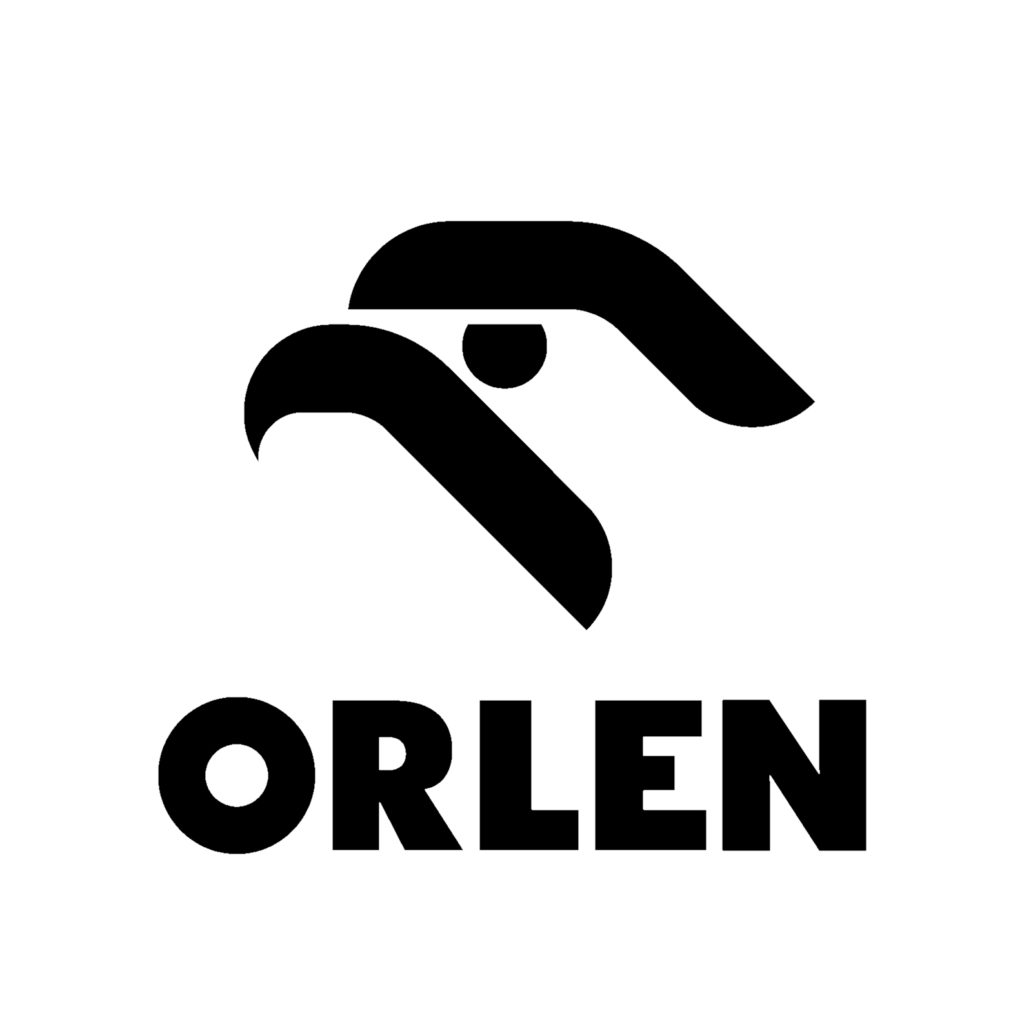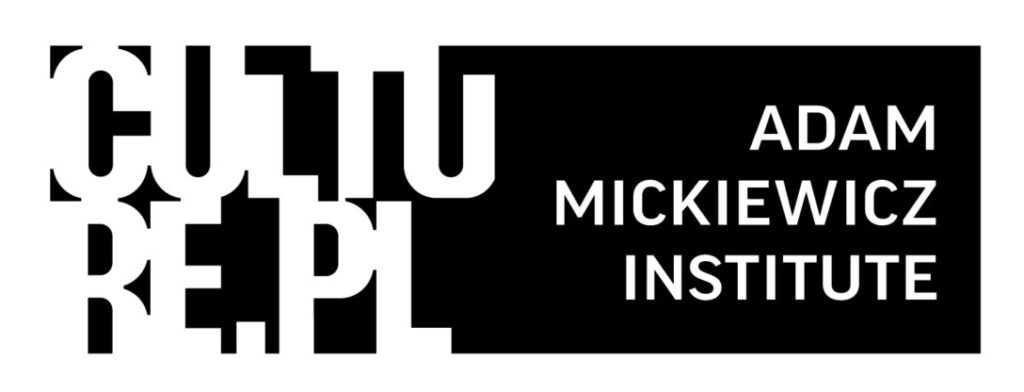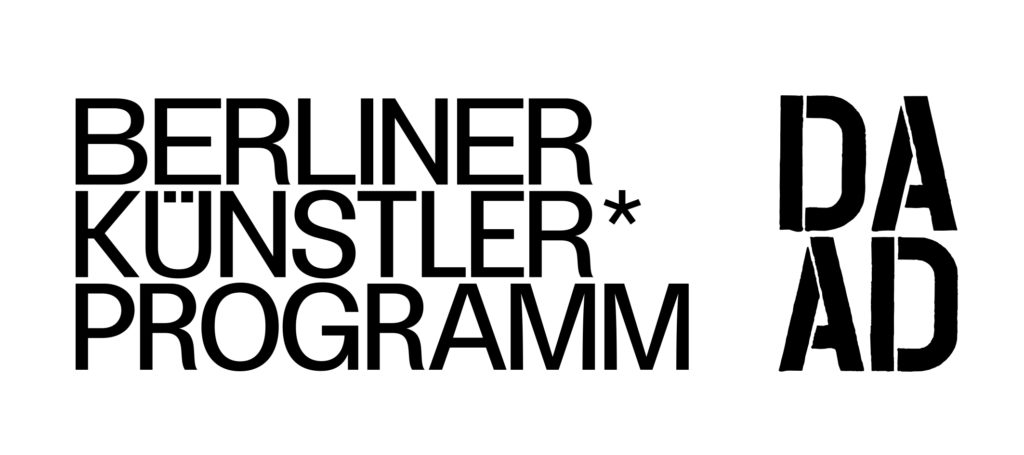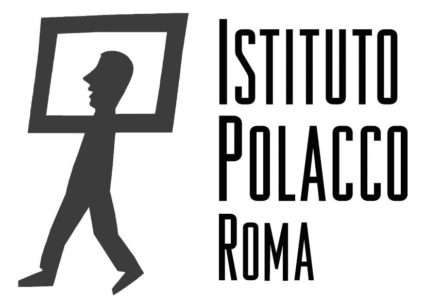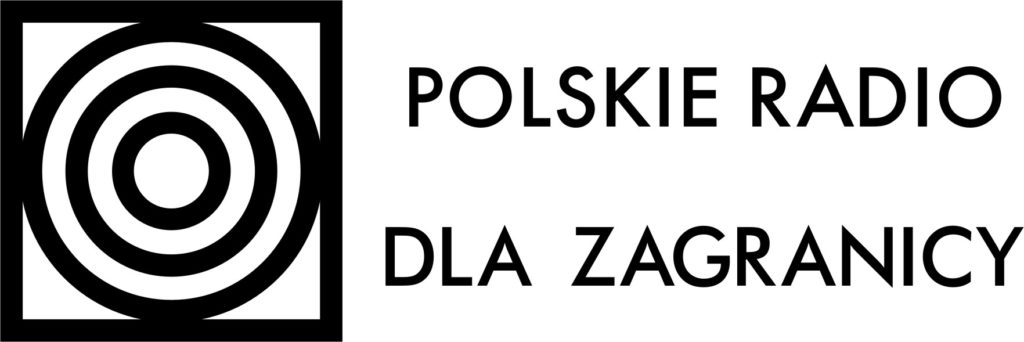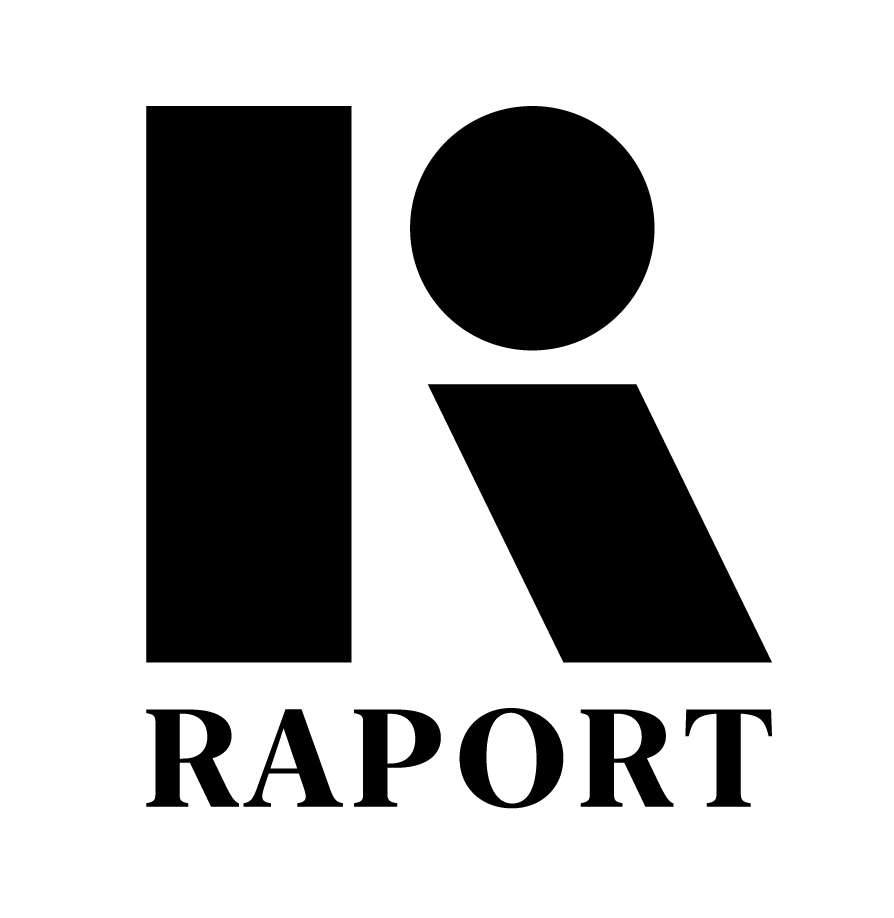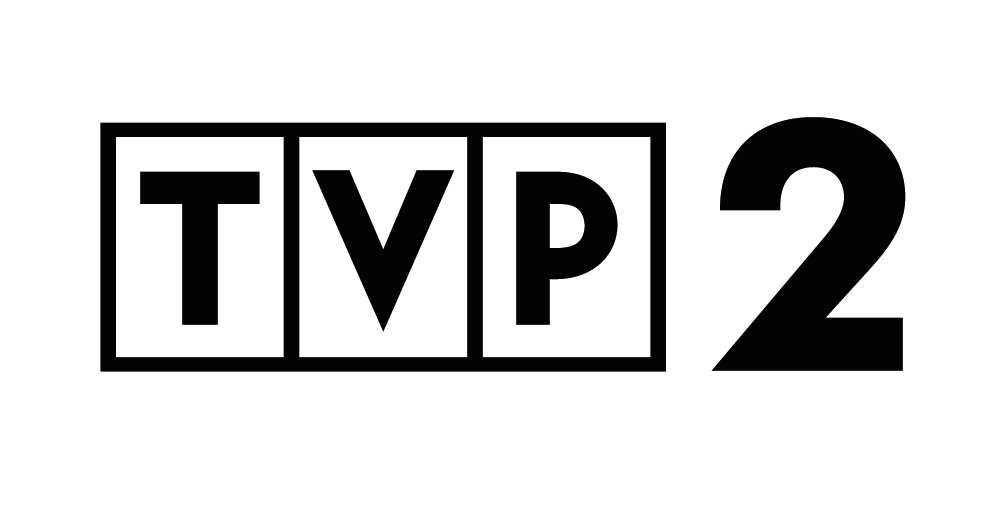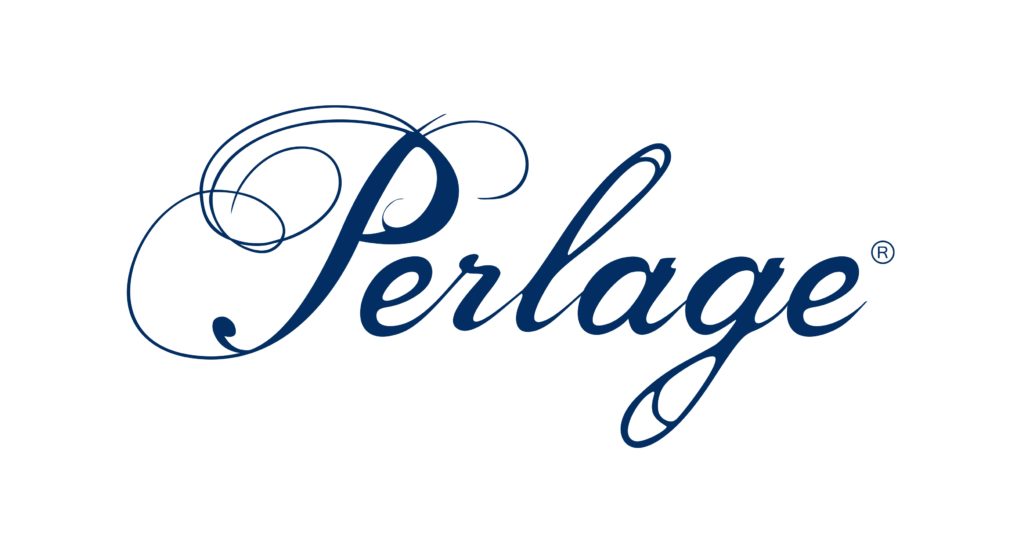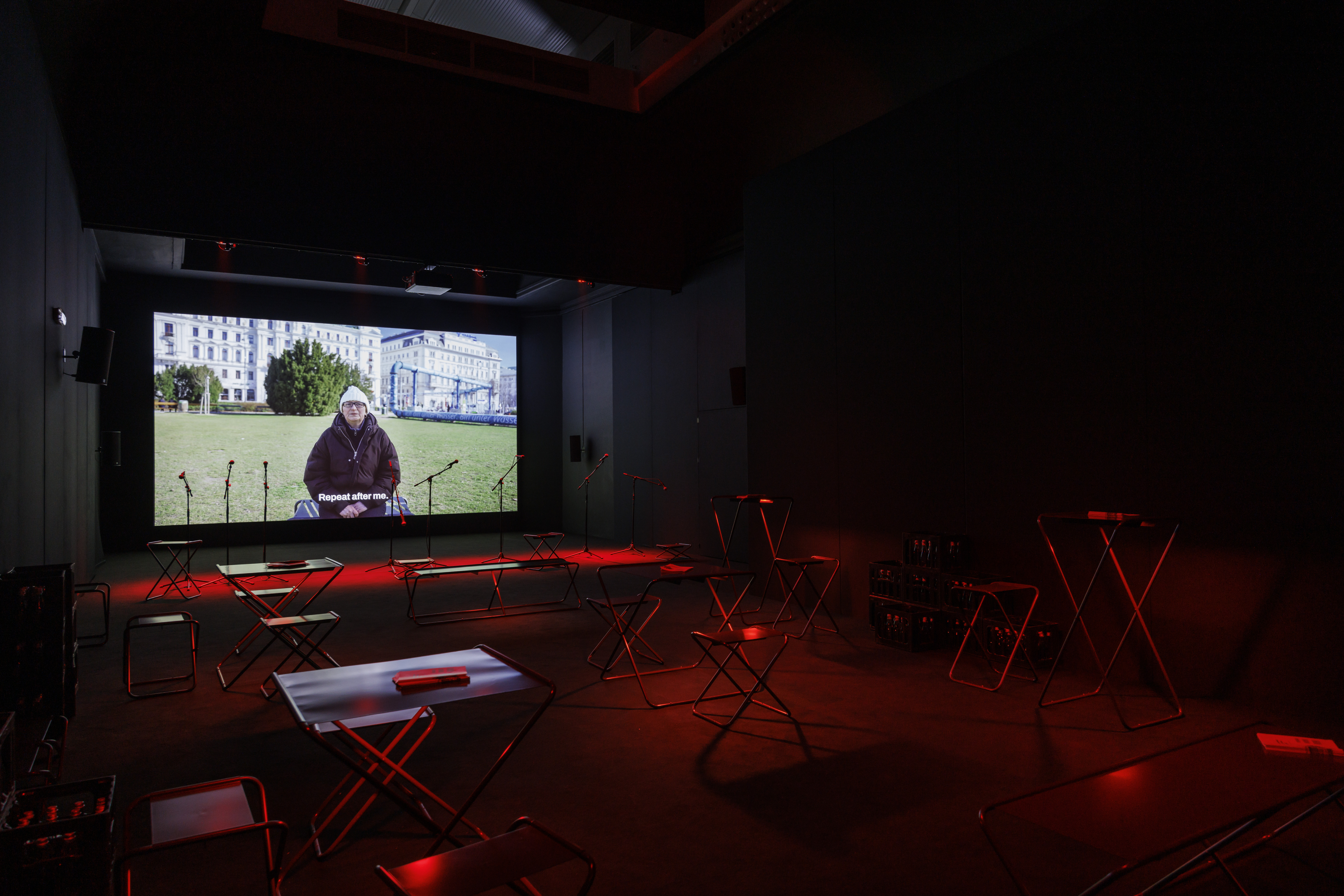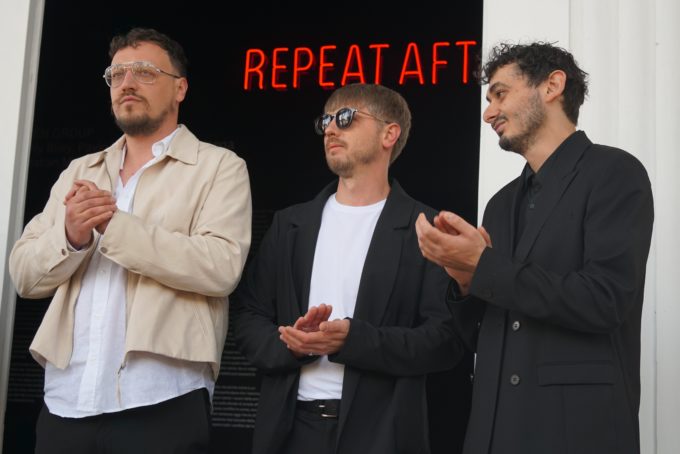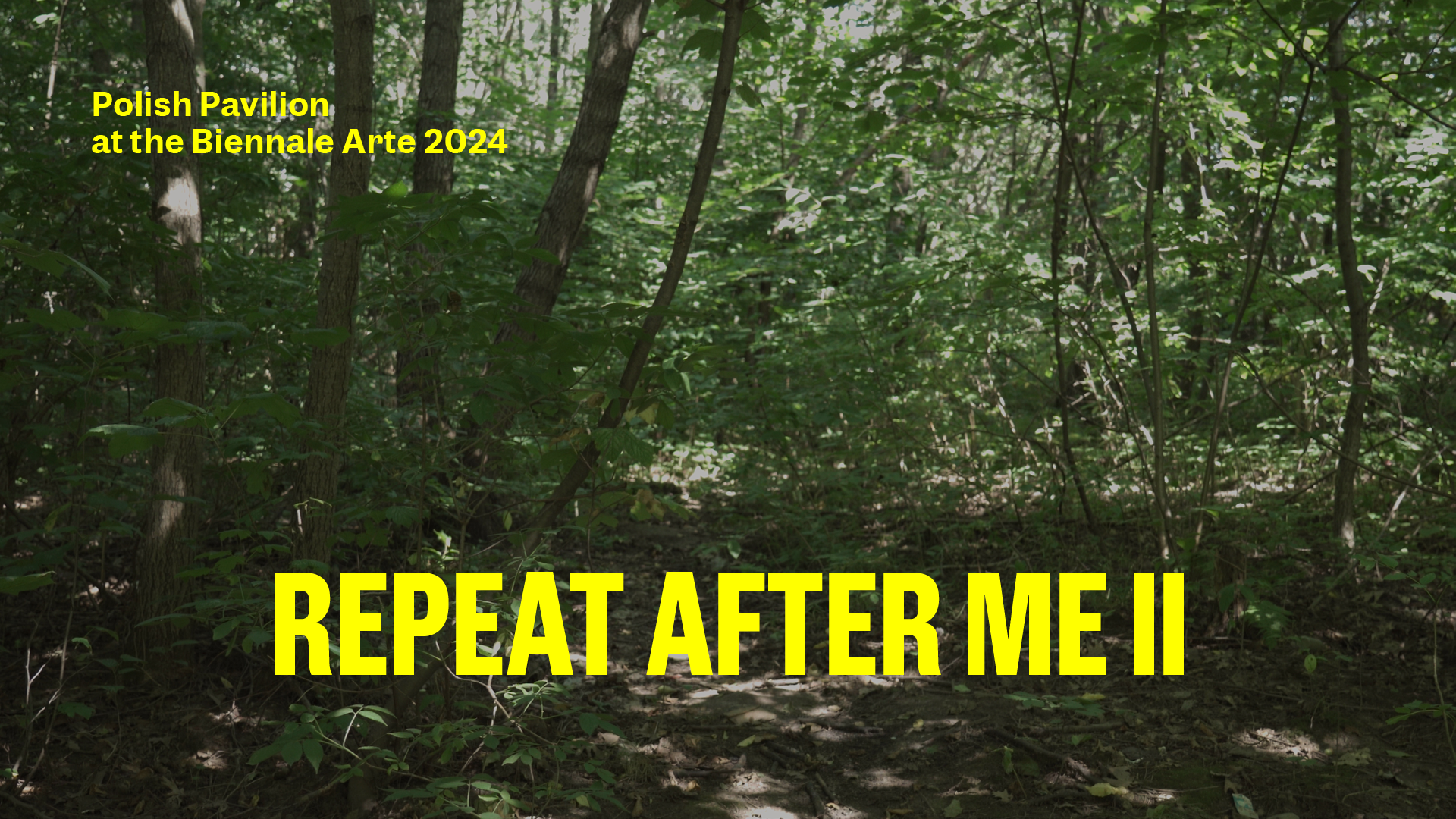
Repeat after Me II
Repeat after Me II is an audiovisual video installation created by the Ukrainian Open Group collective. The group’s work is based on exploring interaction between people and contextual spaces, creating the so-called open situations. Performativity and cooperation with viewers and participants are important parts of their work. They have tackled the subject of war on several occasions, ever since the Armed Forces of the Russian Federation began their military operations in the southeast of Ukraine in 2014. Open Group’s projects are created through a long process, and their works’ themes are always intersecting.
Repeat after Me II is a collective portrait of witnesses of the ongoing war in Ukraine. The videos presented were created in 2022 and 2024. All the protagonists are civilian refugees speaking of the war through the sounds of weapons they remember, then inviting the audience to repeat after them. The artists use the karaoke format. Yet here the accompaniment is not hit songs, it is shots, missiles, howling, and explosions, and the lyrics are descriptions of deadly firearms. This is the soundtrack of the war. The juxtaposition of works from 2022 and 2024 shows the drastic perseverance of memory, as well as the changes in technology. The first video was shot in a camp for ‘domestic refugees’ outside of Lviv. The second work was created outside of Ukraine, in locations that were safe for the participants. Yet even beyond the reach of the marathon of sirens, the sounds of war remain part of their trauma and symbolically widen their scope.
A few weeks before the Russian invasion, the Centre for Strategic Communication and Information Security of the Ministry of Culture and Information Policy began distributing brochures titled In Case of Danger or War, explaining how best to behave in a zone of military activity. The instructions differ depending on whether the attack is coming from automatic rifles, artillery fire, multiple rocket launchers, or an air raid. The ability to tell the difference can save lives. Repeat after Me II shows war as a collective experience, regardless of age, background, professional and social status, giving witnesses the floor and calling attention to individual experiences of this catastrophe.
Viewers can repeat the firearm sounds after the witnesses, learning the language of their experiences, or withdraw into the safe space designed to resemble a karaoke bar. Yet this is no ordinary bar, like the ones we know, it is an instructional karaoke venue forecasting an even more militarised future. This spectre will remain with us for so long as nationalist imperialist policies will be accepted as part of a diplomatic compromise.
- YEAR2024
- CATEGORY Biennale Arte
- EDITION60
- DATES20.04-24.11
- COMMISSIONERBartłomiej Sienkiewicz (to 13 May 2024), Hanna Wróblewska (from 13 May 2024)
- CURATORMarta Czyż
Authors
Оpen Group collective was founded in August 2012 in Lviv by six Ukrainian artists. The group’s members have changed over the years, and at present they are: Yuriy Biley, Pavlo Kovach and Anton Varga. Artists are involved in Open Group until the project in which they are taking part is completed. The group’s work is based on exploring interaction between people and contextual spaces, creating the so-called open situations. Performativity and cooperation with viewers and participants are important parts of their work.
Open Group’s members have run independent art spaces, such as Detenpyla Gallery (since 2011) and Еfremova26 Gallery (2013–14) in Lviv (Ukraine).They won a Special Prize at the PinchukArtCentre Prize in 2013, and the Main Prize in 2015. Their works were featured at the Ukrainian Pavilion at the 56th International Art Exhibition in Venice. In 2016, the Open Group curated a show entitled Dependence Degree, Collective Practices of Young Ukrainian Artists 2000–2016 (Wrocław, Poland). In 2017, the group’s work was presented as part of the Future Generation Art Prize@Venice 2017 (an event accompanying the 57th Biennale). In 2019, the Open Group was the curator of the Ukrainian Pavilion at the 58th Biennale. In 2024, the Open Group will represent Poland at the 60th International Art Exhibition – La Biennale di Venezia with the Repeat after Me II project.
Open Group’s works have been exhibited at such institutions as Albertinum, Dresden; Ludwig Museum, Budapest; Badischer Kunstverein, Karlsruhe; National Art Museum of Ukraine, Kyiv; Museum de Fundatie, Zwolle (Netherlands); Belvedere 21 Museum of Contemporary Art, Vienna; Labirynt Gallery, Lublin (Poland); Miguel Abreu Gallery, New York; PinchukArtCentre, Kyiv; Jam Factory Art Center, Lviv (Ukraine); 4th Autostrada Biennale, Prizren (Kosovo); The School of Kyiv – Kyiv Biennial 2015; and ARS AEVI Museum, Sarajevo.
Marta Czyż – an art historian, independent curator and critic, she lives and works in Warsaw. Her practice draws on archives and recent developments in art history to influence culture and social movements. She explores the history of exhibitions in Poland and the curatorial profession.
She has prepared exhibitions in Poland at the CCA Ujazdowski Castle and Zachęta – National Gallery of Art in Warsaw, BWA Zielona Góra; MOS Gorzów; National Museum in Szczecin and elsewhere. In 2020, she curated the 10th Contexts Festival of Ephemeral Arts in Sokołowsko and the 9th Youth Triennale at the Centre for Polish Sculpture in Orońsko. In 2022, she joined Yuriy Biley in putting together the Society of Discouragement exhibition at the History Meeting House in Warsaw. She regularly publishes in the art-related press (Dwutygodnik, Vogue Polska, Polityka, miejmiejsce, Wysokie Obcasy, Camera Austria, follow.art). In 2015, she and Julia Wielgus released the book In the Frame of the Exhibition – Conversations with Curators (in Polish). She has been granted a scholarship from the Ministry of Culture and National Heritage of the Republic of Poland, and is a member of the AICA.
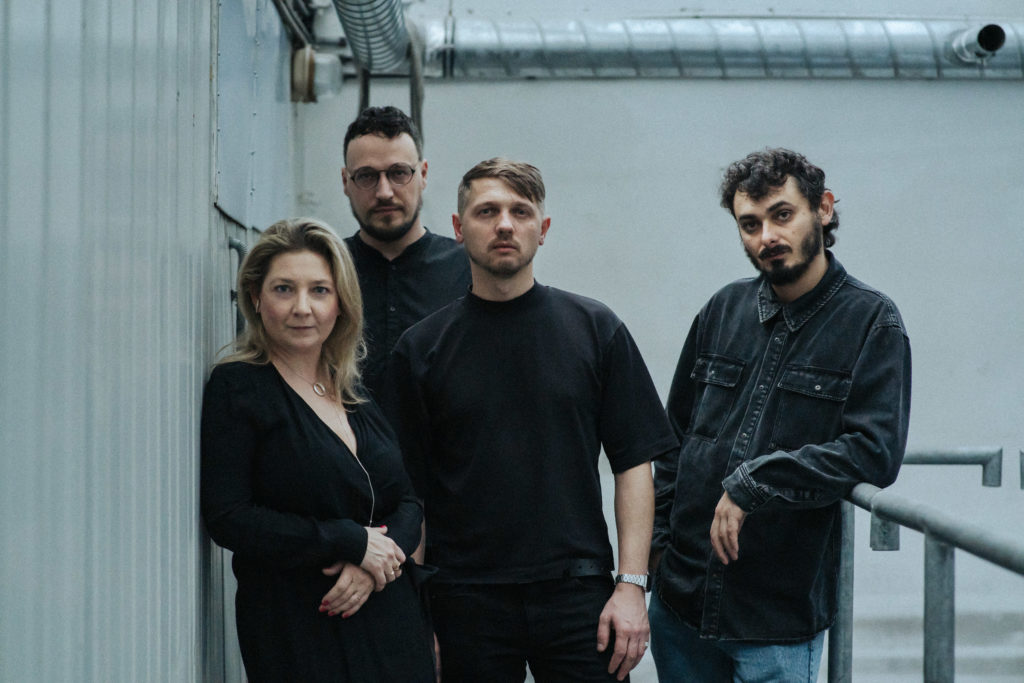
photo by Piotr Czyż/Zachęta Archive


